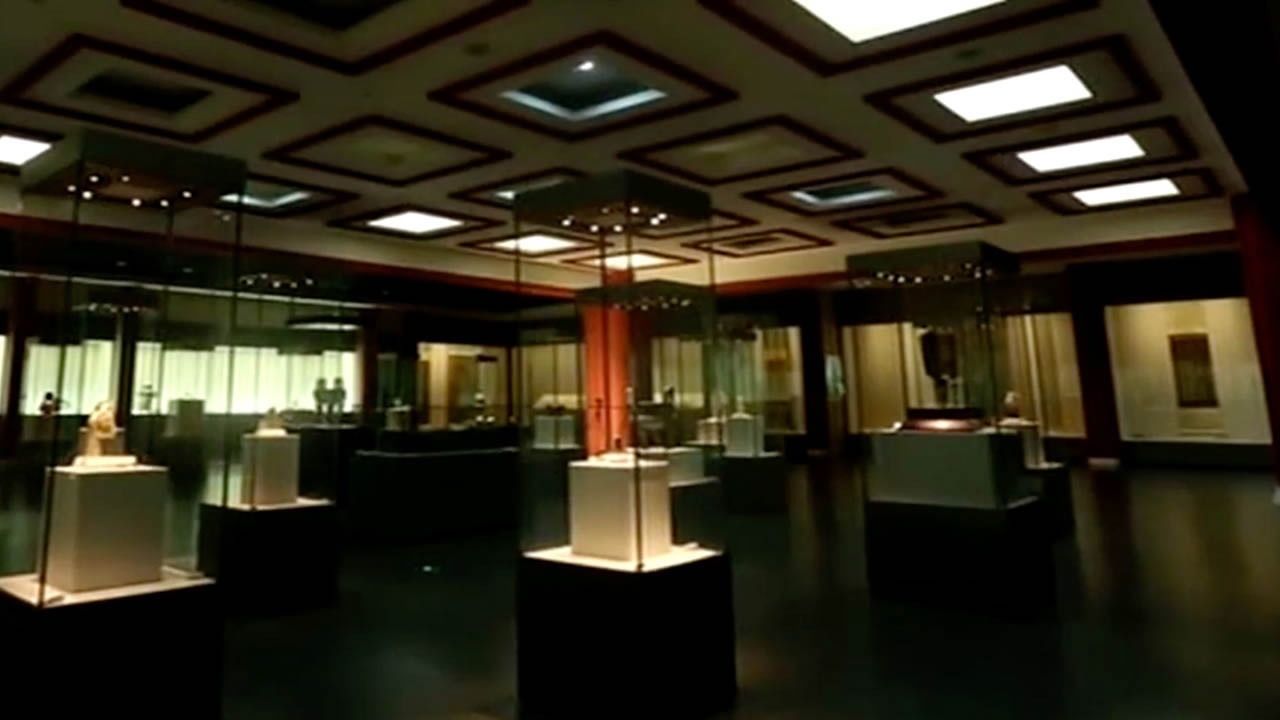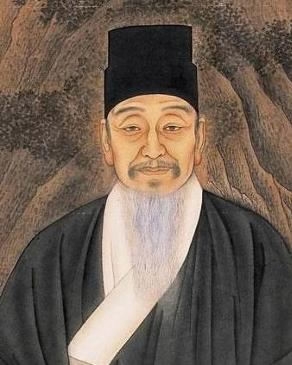
Culture
15:16, 04-Oct-2017
The mystery behind one of Fan Kuan's most famous paintings
By Shen Li

Fan Kuan was one of the most famous painters of the Northern Song Dynasty (960-1127) with a style that greatly influenced later landscape painters.
His best-known work, "Travelers Among Mountains and Streams" hangs in the National Palace Museum in Beijing, while another famous piece, "Snowy Scene of Wintry Trees", is housed in Tianjin Museum.
But a mystery hangs over this latter work as there are doubts as to whether Fan Kuan actually painted it.

"Snowy Scene of Wintry Trees". /Photo via Tianjin Museum
"Snowy Scene of Wintry Trees". /Photo via Tianjin Museum
"Snowy Scene of Wintry Trees" went on display in 2012 for Tianjin Museum's grand opening.
After that, a replica was displayed instead, with the original sealed away in a temperature-controlled storage room as the centuries-old painting could easily be damaged if exposed to the elements.
The painting depicts various peaks covered in
dense forests. The scene also features
a temple, frontier pass, a cold spring and travelers.
Washes of ink suggest a hazy sky, which highlights an atmosphere of snowy
peaks and bitter cold.
Compared to "Travelers Among Mountains and
Streams", the method of texturing the landscape and painting the trees is more abstract, suggesting a later date of production.
Nonetheless, the work is still a valuable reference for understanding Fan
Kuan’s style.

Photo via Tianjin Museum
Photo via Tianjin Museum
Xu Bangda, a respected connoisseur of traditional Chinese paintings, noticed Fan Kuan's name on one of the tree trunks at the bottom of the painting.
After carefully comparing the ink of the painting and the ink of this inscription, Xu found them to be the same color.
But he was cautious, and did not confirm that the painting was definitely one of Fan Kuan's.
Li Kai, deputy director of Tianjin Museum, said: "Although we couldn't confirm that the painting was by Fan Kuan, there's no doubt it's a true masterpiece. The technique the painter displays is simply marvelous. It embodies the essence of Fan Kuan's style."
The painting also bears various seals by previous owners.
It was once stored in Beijing's Old Summer Palace before it was ransacked by French and British troops during the Second Opium War in 1860 when it was burnt down and its treasures auctioned.

Fan Kuan's name is hidden on one of the tree trunks. /Photo via Tianjin Museum
Fan Kuan's name is hidden on one of the tree trunks. /Photo via Tianjin Museum
A scholar named Zhang Yi later discovered the painting and bought it.
Zhang kept the painting as a family treasure until his son, Zhang Shucheng, inherited it after his father's death.
In 1980, he donated more than 400 paintings to Tianjin Art Museum, including this one.
Qian Lin, also deputy director of Tianjin Museum, said that, "The Zhang family has gone to great lengths to collect the paintings, and they are willing to donate them to the museum, to better preserve and promote them."
Chinese paintings during the Song Dynasty reached a new level of sophistication, with further development of landscape painting.
By studying these paintings, it is possible to gain a deeper understanding and appreciation for the artists and their era.

SITEMAP
Copyright © 2018 CGTN. Beijing ICP prepared NO.16065310-3
Copyright © 2018 CGTN. Beijing ICP prepared NO.16065310-3